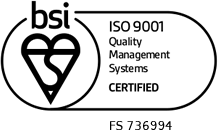The aerospace industry presents a unique combination of challenges for materials science.
Airframes are pushed to the extreme limits of performance and the materials that form them need above all to be lightweight, strong and resistant to fatigue, corrosion and fracturing, easy to machine, and form to precise, complex shapes. Aluminium and titanium have, for some time, been steadily replaced with advanced specialised alloys, composite materials and laminates, carbon fibre reinforced polymers (CFRPs), honeycomb materials and aerogels. Self-healing and toughened materials and coatings, based on a variety of metal matrix composites (MMCs) and polymer matrix composites (PMCs), are also starting to feature.
Engine components, not only needs to be lightweight, strong, tough, and easy to form and machine accurately, but they must also be able to withstand extremes of temperature, both hot and cold, and be highly resistant to chemical damage and corrosion. Alongside advanced nickel and tungsten-based superalloys, refractory, intermetallic and high entropy alloys – ceramic-matrix composites (CMCs), ductile ceramics, functional shape-memory alloys and self-healing materials (eg: for turbine tips), are all being actively researched, developed and deployed to provide longer, safer life at greater extremes and at lower cost.
Complimentary to such materials, complex, embedded sensor arrays, utilising a variety of functional materials – importantly piezoelectrics – continuously monitor for excessive stresses and strains and signs of impending structural failure, long before it actually occurs. Actuator systems – that control, for example, aerodynamic control surfaces, fuel system and engine components – also increasingly utilise piezoelectric materials.
Lastly, one must not overlook the extensive range of electronics, communications, navigation, systems that all ultimately rely on advanced materials, and in particular semiconductors. (See section on – Electronics, Telecommunications, Computing ).
Advanced materials design, precise materials modelling and finite element analysis (FEA), accurate materials characterisation and rigorous materials testing is essential due to the safety-critical and high-cost nature of aerospace applications.
Piezoelectric Applications in Aerospace
Wherever there is a need to precisely control motion or to detect movement or forces, piezoelectrics will find a home and nowhere is this more prevalent than in vehicles of all shapes and sizes, be they our own cars or multi-billion Euro aircraft carriers.
Piezoelectric sensors are capable of measuring the multitude of pressures, flows and vibrations found in our vehicles to improve performance, increase safety and ensure appropriate maintenance is carried out when needed to keep our vehicles running. They can even be used to make our lives easier and save us from embarrassment when used as acoustic range finders in parking sensors.
The ability of piezoelectrics to create movement is equally important. High torque piezoelectric motors and actuators, with fast response times and accurate positional control, are finding increased uses where the need to control movement is paramount. This may range from simply diverting the direction of the headlamps as a car goes around a corner to delivering just the right amount of fuel to the engine to ensure maximum efficiency. Future applications may even involve the control of airflow across the wings of aircraft to allow them to take off, fly and land more efficiently while making less noise.
From small valves controlling the flow of air around complex engines to massive sonar arrays helping to guide modern ships and submarines around the world’s oceans, piezoelectrics are crucial to modern vehicle technology.
Recent technology advances in the aerospace industry would not have been possible without piezoelectric materials. For example, in one of the most successful commercial aircraft in recent times, the Boeing 777, piezoceramics are used in 60 ultrasonic fuel tank sampling probes. Piezoelectric ultrasonic transducers are installed at various positions in each tank, in order to monitor the level of fuel present in the container. Similar ultrasonic fuel probes and other level sensors are also used in fighter aircraft, because of their ability to provide highly accurate measurement, regardless of the orientation of the plane.
Aerospace applications typically require actuators capable of large displacements, precise positioning, and fast response times. To meet these requirements, several classes of actuators have been recently developed, based on low-voltage piezoelectric materials. One of them is the amplified piezoelectric actuator, which can withstand large external forces and have successfully passed severe qualification tests, such as centrifugal accelerations and vibration forces encountered during space launch.
Piezoelectric actuators have also been demonstrated to be a reliable solution for active sound damping applications. In particular, this type of actuator has been considered in helicopter applications for reducing the noise due to vibrations, and then, enhancing the comfort of the pilot, and the performance of the devices located in the cabin.
In aerospace applications, high overloads are common (during aircraft takeoff or manoeuvre). Thus, the resistance to high acceleration is a necessary condition.
Aerospace applications of amplified actuators include scientific instrumentation, such as telescopes and microscopes, micro-satellite propulsion valves, and structural vibration control systems.
Some aeronautical applications also refer to the active flap control in aircraft wings and helicopter blades. An interesting piezoelectric application can be found in Bell and Sikorsky helicopters. Each of these vehicles has a pitch link – a piece of metal that connects the rotor blades to the hub. A piezoelectric-based sensor on the pitch link constantly measures vibrations to monitor the health of the engine. The device is completely autonomous – it powers itself with vibrations, senses and measures them, and transmits relevant data wirelessly to the central onboard computer. This application can work for years on end, does not need any batteries, and is fail-safe. There are plans to implement this solution into other aircraft structures.
One widely discussed and long-awaited solution for vehicle health monitoring systems, used especially in aerospace, would utilize a sprayed piezoelectric paint that uniformly cures at ambient temperature. It is foreseen that it would be a composite piezoelectric material with adjustable properties, which could be tailored to specific device requirements. These devices would help to detect potential defects in aerospace materials and transmit a signal to the central computer unit with relevant information. Other potential applications of such materials would be in close range ultrasonic-based non-destructive testing, distributed acoustic emission sensors and ultrasonic guided wave-based embedded sensors in metal or fibre reinforced polymer composites.
This kind of material establishes new trends within the field of piezoelectricity since new methods of processing have to be designed, in order to meet the requirement for ultra low-temperature fabrication, together with high activity and excellent reliability.
The aerospace industry is thus taking full advantage of modern piezoelectrics.
Among various piezoelectric materials currently used in aerospace applications, PZT (Lead zirconate titanate/lead zirconium titanate) is the most popular. PZT materials are used in applications such as accelerometers (for measurement of vibration), gyroscopes (for measurement of the acceleration and pitch of aircraft, missiles and satellites), and level sensors (for example, fuel tanks). These materials were fragile and of relatively high cost in the past. Now, they are fabricated in the form of flexible, thin, and easy to apply solutions, which do not affect the devices’ functionality. Their additional energy harvesting feature allows for expansion of current aerospace systems’ performance, with non-invasive structure sensing and wireless communication.
Novel lead free piezoelectric materials are also being actively developed – refer to the section Lead Free.



